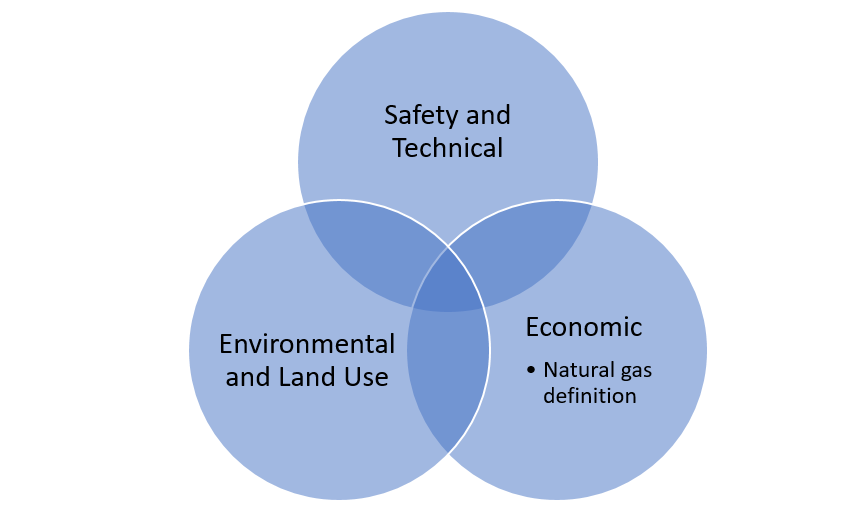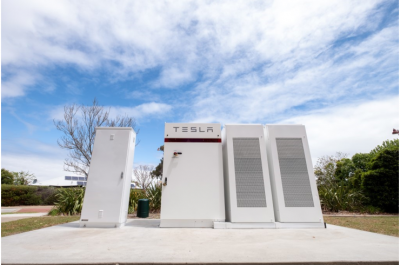National Gas Law: A law of unintended consequences?
DISCLAIMER: This article refers to reviews of gas legislation and regulations but does not constitute legal advice.
The multiple applications and the diverse availability of hydrogen is creating a lot of promise for the future of the energy. By blending hydrogen into the gas network, it can be used as a fuel to power economies, for export and as a feedstock to drive industry and manufacturing.
Existing legislation and regulations need to be studied to determine how and when widespread blending of hydrogen in gas networks can occur. In 2020, Future Fuels Cooperative Research Center[i] (FFCRC) completed an in-depth regulatory mapping project that reviewed regulation across all aspects of the supply chain (extraction, manufacturing, storage, transmission, distribution and use) relevant to the introduction of future fuels (including hydrogen and biomethane) into existing gas infrastructure.
Figure 1: Types of regulations reviewed in FFCRC Project RP2.2-01 (Source: Future Fuels CRC, 2021)
The project provided a summary of safety and technical regulation, economic regulation, and environment and land use planning regulation. The impacts of different fuel mixes on each regulatory instrument were assessed.
Both the FFCRC study and earlier studies called into question whether hydrogen blending complies with the definition of natural gas as per the National Gas Law (NGL).
Is National Gas Law supportive of future fuels?
The National Gas Law is the primary legal instrument used to make economic determinations of regulated gas networks. It includes a definition of natural gas.
Natural gas means a substance that –
(a) is in a gaseous state at standard temperature and pressure; and
(b) consists of naturally occurring hydrocarbons, or a naturally occurring mixture of hydrocarbons and non-hydrocarbons, the principal constituent of which is methane; and
(c) is suitable for consumption.
Source: National Gas Law[ii], Section 2 – Definitions
So, what does this mean for future fuels in gas networks?
Clearly, the first part of the definition is easily met. Hydrogen blends, pure hydrogen or biomethane are all gaseous at standard temperature and pressure[iii].
The second point has several interesting terms that could be interpreted in multiple ways:
- Naturally occurring. It is unclear what the legislative drafters were thinking at the time when writing this definition, but this term could have been used to distinguish natural gas from town gas, which was produced from coal or oil. In that case, producing hydrogen from coal or by splitting water could also be interpreted as a manufactured product, and hence not naturally occurring. So even a mixture of some hydrogen would not be naturally occurring, unless that hydrogen was part of the reservoir gas. That is unlikely as hydrogen is generally not produced with natural gas. Biomethane can similarly be interpreted in several ways. Biogas occurs from decaying organic matter such as plants. But to be injected into networks, biomethane requires the collection of organic material into landfills or biodigestors and this biogas then needs to be upgraded to network specification. It is unclear how much of that can be considered naturally occurring. You could also argue that natural gas is not naturally occurring as human intervention is required to extract it from the earth.
- Hydrocarbon. This term is quite clear in that it is a compound made up from hydrogen and carbon. Hydrogen by itself is not a hydrocarbon. Biomethane is the same chemical compound as methane, the predominant hydrocarbon in natural gas, and as such is a hydrocarbon.
- [Naturally occurring] non-hydrocarbons. These would refer to other compounds from natural gas extraction, for example carbon dioxide or nitrogen gas within the reservoir. While hydrogen is a non-hydrocarbon, it is not a major component of “naturally occurring” natural gas.
- Principal constituent being methane. Principal is defined as the main or first in order of importance. This term does not provide any information about the actual amount of methane required. A mixture of 40 per cent methane, 30 per cent ethane and 30 per cent carbon dioxide or a mixture of 99 per cent methane and one per cent carbon dioxide both have methane as the main component, and yet are very different gases.
The last point emphasises that the natural gas – for the purposes of the natural gas law – needs to be of suitable quality and energy content to be usefully consumed by customers. Once again, the definition here is quite open but subsequent quality specifications in technical and safety regulations provide more detail.
The simple assessment above would suggest that hydrogen would not comply with the natural gas definition but that biomethane may comply with the definition.
But this is the definition used in economic regulation – the regulation that the Australian Energy Regulator (AER)refers to in making its decision on determinations and access arrangements for regulated gas networks. Network operators also need to comply with technical and safety regulations for the operation of its network. This often includes additional definition and specifications of the gases that can be distributed via networks. And that technical regulation applies to both regulated and non-regulated networks.
Does state technical regulation provide a solution?
Using technical regulation could be a useful way for networks to blend future fuels.
For example, the SA Gas Act[iv] has a slightly different definition of gas compared to the NGL that avoids the terms “naturally occurring” and “principal constituent being methane”. The definition is:
gas means a fuel consisting of hydrocarbons or predominantly of hydrocarbons that is in a gaseous or vapour form when it is at the pressure and temperature of its normal pipeline transportation and utilisation conditions, but does not include anything declared by regulation not to be gas;.
This definition supports blending hydrogen with natural gas in networks. The definition may need to be reviewed to permit 100 per cent hydrogen to be distributed via gas networks.
Conclusion
There are a wide range of economic, technical and environmental regulatory instruments covering gas distribution networks. While hydrogen blending may not be covered by the natural gas definition in the National Gas Law that is used to make decisions on network access arrangements, hydrogen blending projects can be permitted through technical state regulation.
Clearly complying with a safety case is of primary importance to be able to blend hydrogen into gas networks. But regulatory review may be required to ensure that economic regulation can cover future fuels distributed in gas networks.
[i] https://www.futurefuelscrc.com/publications/
[ii] https://www.legislation.sa.gov.au/LZ/C/A/NATIONAL%20GAS%20(SOUTH%20AUSTRALIA)%20ACT%202008.aspx
[iii] Standard temperature and pressure is normally defined as zero degrees Celsius and atmospheric pressure (of 101.3 kPa)
[iv] https://www.legislation.sa.gov.au/LZ/C/A/Gas%20Act%201997.aspx





